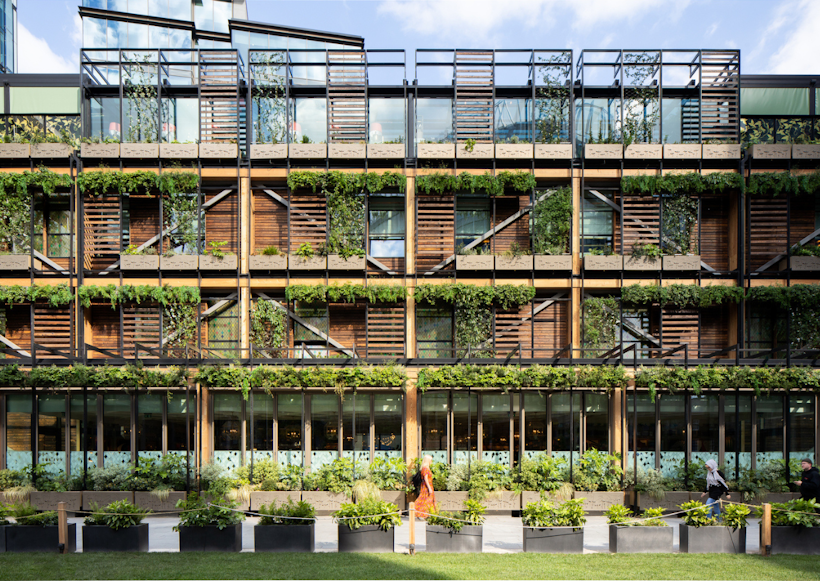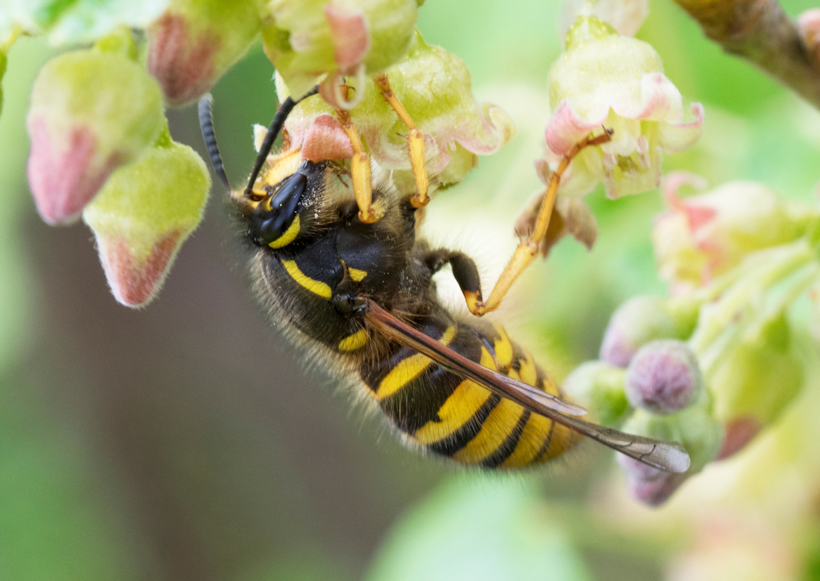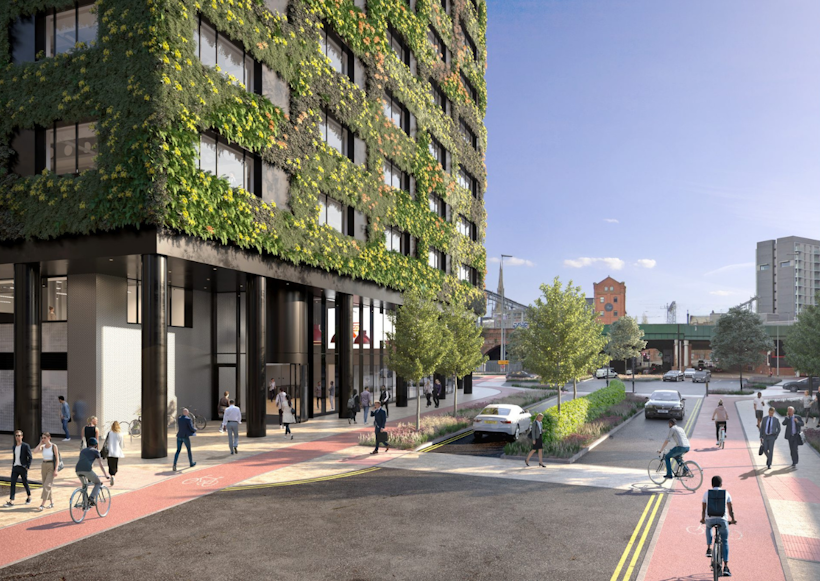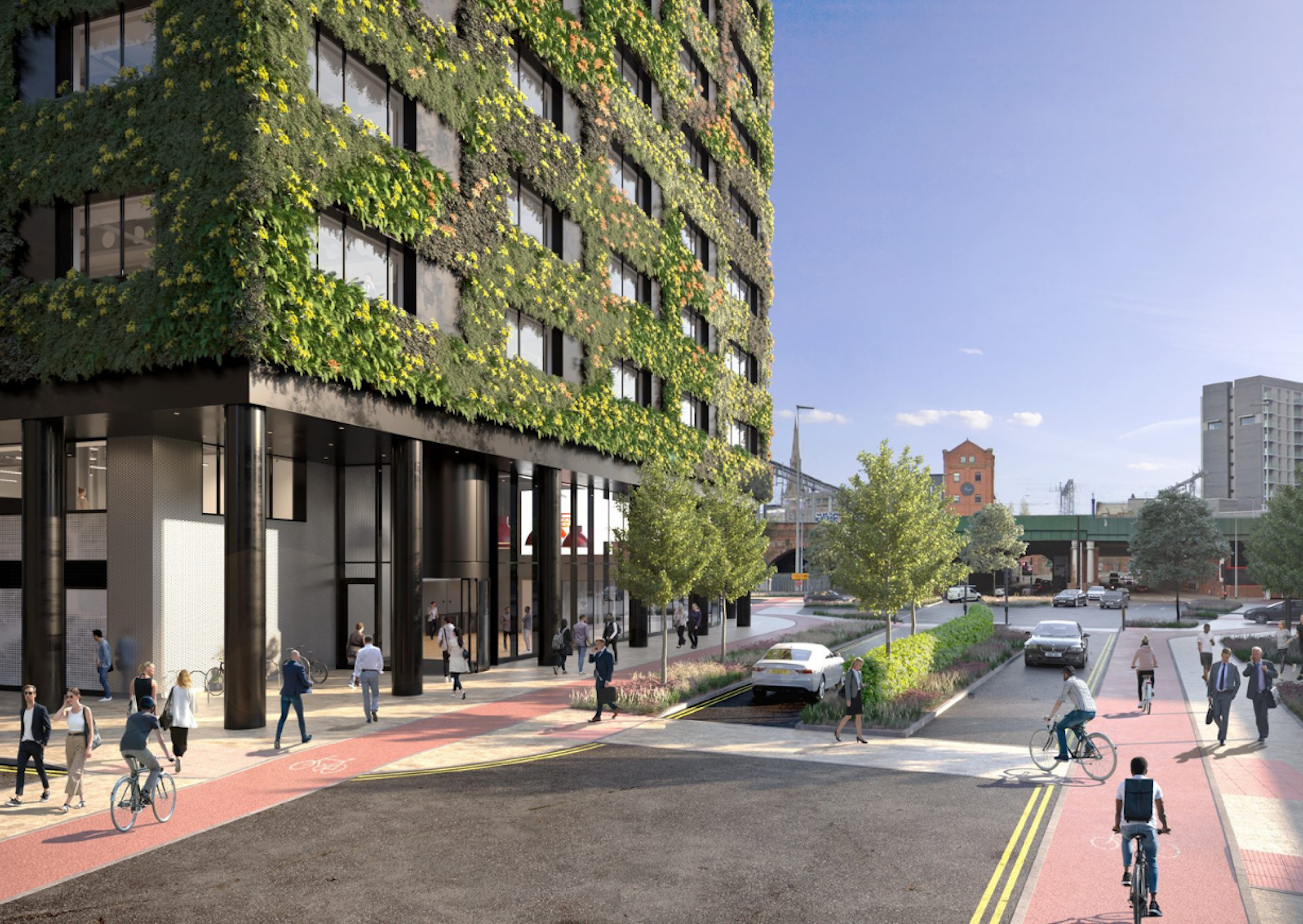Over the last few decades, the importance of green walls to the natural environment and human well-being has grown. In the urban environment, where space for greenery is few and far between, ecosystems and green spaces are being introduced by growing them vertically as green walls (also known as living walls). Green wall ecology is a rapidly growing science, with many studies focusing on their thermal values. However, the benefits of living walls do not stop here. They have a huge impact on urban biodiversity, which we will be exploring in this article.
What are green walls?
Green walls are vertical structures that house a range of plant species. Typically, the plants in a living wall design are accompanied by a complete growth set up within. This means that substrate (soil) and an irrigation system (water) are present to ensure a long-term and sustainable feature. Green walls can be installed on the exterior or interior walls of buildings depending on preference. However, exterior living walls pose the most benefits in terms of urban biodiversity net gain.

The value of green walls to urban biodiversity
According to the 2019 State of Nature study, in the UK, the average abundance of wildlife has fallen by 13% since 1970 – largely impacted by the urbanisation of wild land to help house the growing population. Urbanisation has also had an impact globally, not only on wildlife but also on plant life and vegetation, with around 420 million hectares of forest being lost between 1990 and 2020.
These worrying statistics are a wake-up call for all of us. Changes must be made in order to replenish the environment and reintroduce biodiversity into our cities and towns.
"This isn’t just about losing the wonders of nature. With the loss of even the smallest organisms, we destabilise and ultimately risk collapsing the world’s ecosystems – the networks that support the whole of life on Earth." – Sir David Attenborough
Green walls are just one of the many ways efforts are being made to tackle the climate crisis and restore ecosystems. But what is the real value of green walls to urban biodiversity?
Green walls allow native plant species to flourish
The stripping away of natural plant species through urbanisation has led to a decline in native plant species within our cities. These plants are vital in maintaining cleaner air, reducing ambient temperatures, and providing habitats for wildlife and insects. Green walls are a great way to restore plant life in urban environments as they can be built vertically and don’t require any ground space, which is hard to come by in densely built-up environments.
Green walls that are installed with a natural soil substrate base allow for greater flexibility in plant selection, planting of native species, pollinator planting, and sources of nectar, leading to improved urban biodiversity.
Green walls provide habitats for wildlife
Green walls have been demonstrated to be a habitat that supports biodiversity. Through natural substrate and full plant coverage, modular herb-shrub living wall systems have been shown to attract a wide range of wildlife. A 2014 PHD thesis by Caroline Chiquet which studied the biodiversity present in 22 living walls in the UK, found that birds were more present in residential areas with living walls than similar areas without living walls. In total, Chiquet found nine species of birds, 13 species of snails, 33 species of spiders and over 2600 morphospecies across the studied walls.
These habitats are vital for maintaining a healthy ecosystem within our cities.

Green walls provide nutrients for insects and wildlife
As well as providing habitats for a variety of species, green walls also provide food and nutrients for foraging birds and pollinating insects such as bees. This network of foraging sites created by the complex planting of various native species also means the wall is able to maintain itself with the help of the pollinators it attracts, furthering the sustainability of the wall.

Boost urban biodiversity in your city with Viritopia green walls
Are you in the early stages of development? Are you looking to capitalise on environmental assets? Are you interested in learning more about living walls? Then look no further. Our team at Viritopia has you covered.
Viritopia has over 20 years of experience designing and maintaining green infrastructure to create a detailed analysis of how a scheme will meet regulatory requirements. We help a faster planning process and provide you with what’s needed to take your project to the next level. Head to our site to book a living wall consultancy or explore more about our green walls and their benefits.

_xqxbu.jpg?w=580&h=580&q=90&auto=format&fit=crop&crop=edges,focalpoint&fm=png)